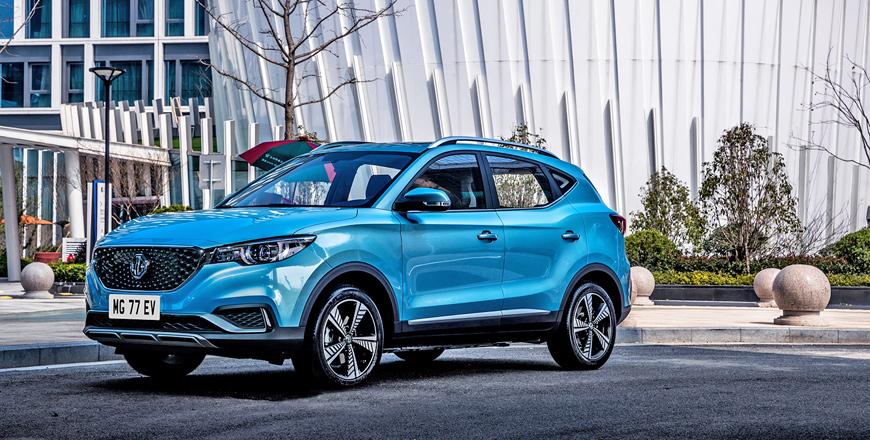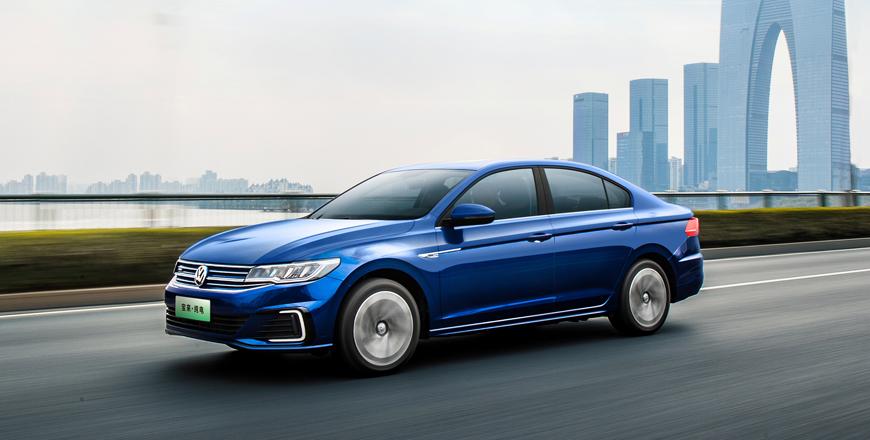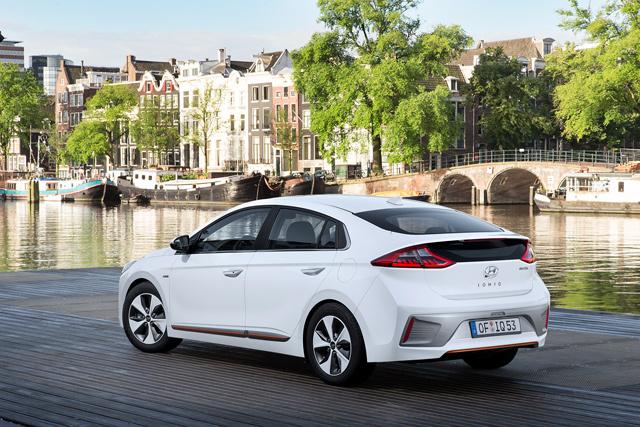You are here
Polestar 2 (Dual Motor): Swift, stylish Swedish EV sports saloon
By Ghaith Madadha - Jan 09,2023 - Last updated at Jan 09,2023

Photo courtesy of Polestar
First launched in 2019 and slowly establishing a presence on Jordanian roads, the Polestar 2 is the second offering from Chinese Geely-owned Swedish brand Volvo’s sportier division since its establishment as a standalone sub-brand. The Polestar 2 is ostensibly a compact premium EV sports saloon.
Offered in single or significantly more powerful dual motor guises, the Chinese-built Polestar 2, however, feature a more practical lift-back body, and being built on the group’s high riding CMA platform, has one foot in the crossover segment.
Muscular momentum
A swift and stylish and sports saloon with a sleekly low roofline and bulging bodywork incorporating convex and concave surfacing, the Polestar 2 cuts quite the muscular figure. With sharp lines, slim headlights, pinstripe like rear lights, hungry grille, high sided flanks, jutting bumper, bulging bonnet and crisp creases, the Polestar’s athletic aesthetic is complemented by huge 19-inch alloy wheels shod with low profile 245/45R19 tyres. Meanwhile, its discretely high-riding stance and lower black cladding lend it a sense of urgent momentum.
With its lower black cladding somewhat detracting from and visually breaking up its high flanks, it also seems to simultaneously draw attention to the Polestar 2’s bottom-heavy configuration. Contributing towards a massive SUV-like 2,123kg mass, the Polestar 2’s batteries are located below its cabin floor to better manage their considerable heft for a low centre of gravity and within-wheelbase weighting for balanced dynamic properties. The more powerful Polestar 2 Dual Motor version meanwhile adds a second rear motor for better performance, balance, traction and driving fluency.
Seamless surge
Swift yet near silent and seamlessly surging in its delivery with its single ratio automatic gearbox and high revving electric motors, the Polestar 2 Dual Motor develops a maximum combined system output of 402BHP and a gut-wrenching 487lb/ft torque, much of which is on tap as soon as pedal hits metal when launching from standstill. Eliciting much less torque steer than usual for torque-rich front-drive EVs – presumably including its own less powerful but still abundant single motor variant — the Polestar 2’s dual motor all-wheel-drive allows more composed hard acceleration.
With less torque steer when accelerating from standstill or when powering out of corners the Polestar 2 pounces forcefully and with and responsive immediacy, running the 0-100km/h acceleration benchmark in just 4.7-seconds. Remaining versatile and effortlessly responsive through to highway speeds, the Polestar 2’s 205km/h top speed is, however, limited by its use of a single gear and its electric motor’s rev limit, the Polestar 2’s rate of acceleration is similarly expected to drop off somewhat at higher speeds, as typical to many EVs.
Confident and composed
Like most EVs, the Polestar is most efficient at more moderate stop/start speeds and inputs, with its claimed maximum 480km driving range expected to drop off significantly with sustained and aggressive inputs and high speed driving, where regenerative brakes have less opportunity to reclaim kinetic energy. Claimed 10-80 per cent charging time using a high capacity charger, where available, is 35-40 minute, and 7-8 hours for full charge using a home-installed wall charger. Conventional home charging times are not quoted, but expected to be significantly longer.
A confident and composed sports saloon with muscular responses and a low centre of gravity, the Polestar 2 turns into corners tidily and well contains body roll with a grounded ride quality. That said, its 2.1-tonne heft remains evident, even if strategically well distributed. Powering out of corners the Dual Motor version suffers less torque steer or oversteer than powerful front drive EVs, with the rear wheels acting to push it out of bends and helping to more effectively put power down to tarmac.
Quiet and classy
That said, with so much torque available so instantly, the Polestar 2 is more fluent through corners when power is re-applied with light, progressive accelerator inputs — and lift-off as regenerative braking kicks in. Settled, stable and refined, the Polestar 2 is confident at highway speeds, but can ride with a somewhat firm quality over jagged bumps and potholes. An optional Performance pack, meanwhile, includes unrated brakes, adjustable dampers and lower profile 245/40R20 tyres for sportier handling, but would come at the cost of ride comfort and fluency.
Quiet and well-assembled, the smart and stylish Polestar 2 is extensively well-equipped with tech features, equipment and displays, yet retains an uncluttered, classy and sportily up-market ambiance, with body-hugging seats, chunky steering wheel and focused driving position. Its dark tones, high waistline and small glasshouse lend a hunkered down feel, even with a comparatively high floor, while visibility is usefully aided by a reversing camera. Adequately spaced and cosy if not outright generous inside, its larger and well-accessible lift-back rear luggage compartment meanwhile accommodates a 405-litre minimum.
TECHNICAL SPECIFICATIONS
- Engine: Dual, front- and rear-mounted electric motors
- Battery: Underfloor-mounted lithium-ion, 78kWh
- Gearbox: 1-speed automatic, all-wheel-drive
- Power, BHP (PS) [kW]: 402 (408) [300]
- Power-to-weight: 189BHP/tonne
- Torque, lb/ft (Nm): 487 (660)
- Torque-to-weight: 311Nm/tonne
- 0-100km/h: 4.7-seconds
- Top speed: 205km/h
- Range, WLTP: 480km
- Charging time, fast charger, 10-80 per cent/wall charger: 35-40 minutes/7-8 hours
- Length: 4,606mm
- Width: 1,859mm
- Height: 1,482mm
- Wheelbase: 2,735mm
- Ground clearance: 151mm
- Headroom, F/R: 1,048/1,010mm
- Legroom, F/R: 1,073/862mm
- Shoulder room, F/R: 1,386/1,370mm
- Hip room, F/R: 1,336/1,356mm
- Approach/departure angles: 15.1°/22°
- Luggage volume, front/rear, min-max: 35-/405-1,095 litres
- Kerb weight: 2,123kg
- Towing weight: 1,500kg
- Steering: Electric-assisted rack & pinion
- Turning circle: 11.5-metres
- Suspension: MacPherson struts,/multi-link, anti-roll bars
- Brakes, F/R: Ventilated discs 345 x 30mm/320 x 20mm, regenerative
- Tyres: 245/45R19
Related Articles
Formerly used for the then British manufacturer’s sporty compact saloon circa 2001, the ZS nameplate was resurrected for service as the bran
A recent and gradually more popular arrival to the Jordanian market, the Volkswagen e-Bora follows in the footsteps of the prolific seventh
Designed specifically for electrification rather than adapted from a regular combustion engine model, the Hyundai Ioniq is offered in three


















